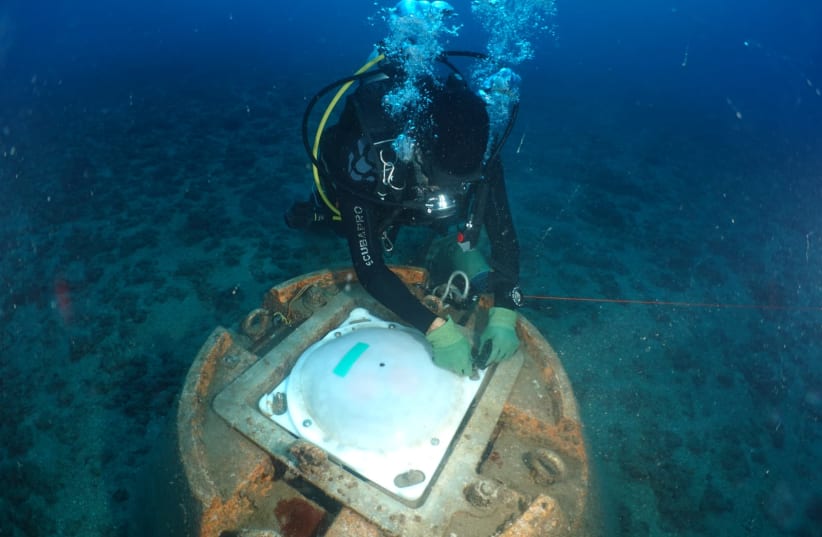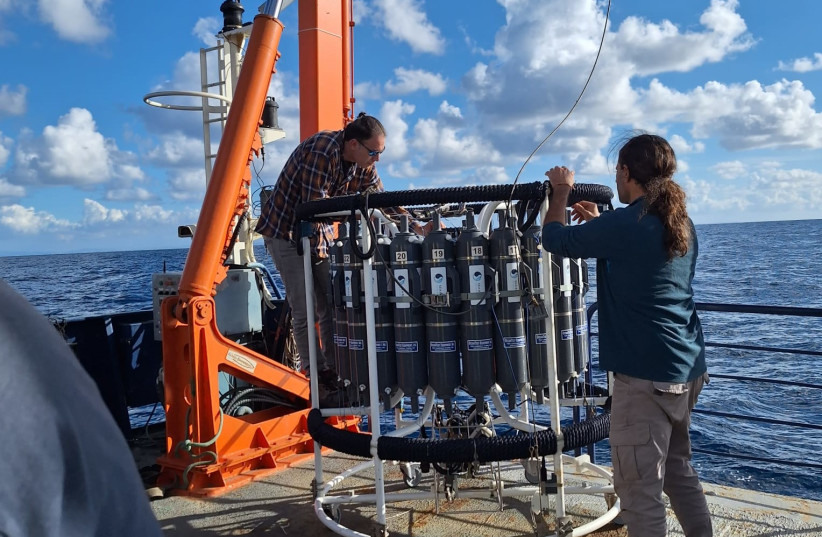The report said that the upper layer is warming at 0.13 degrees Celsius yearly because of global warming.
By MAAYAN JAFFE-HOFFMAN. FEBRUARY 6, 2024

The Mediterranean Sea’s upper layer is warming significantly faster than the global forecast, according to a report issued Monday.
The report, issued by Israel’s energy and environmental protection ministries and the Oceanographic and Limnological Research Institute, said that the upper layer is warming at 0.13 degrees Celsius yearly because of global warming and the sea’s smaller size than the oceans. That rate is much higher than the worldwide forecast of 0.055 to 0.069 degrees Celsius annually by the Intergovernmental Panel on Climate Change (IPCC).
Moreover, the report showed a sea level rise of about 13.8 centimeters between 1992 and 2022, with an average rate of 4.6 millimeters per year – also faster than the global rate published by the IPCC at 3.69 mm per year. The authors said this is caused by the warming of sea waters and melting ice caps.
The Mediterranean Monitoring Report is published each year. It reports on the various physical, chemical, and biological data necessary for understanding the “health status” of the sea. The report released Monday is for 2022 and is based on samples collected throughout that year. The findings were then analyzed and consolidated in the first half of 2023, reviewed by an expert advisory committee convening in July 2023, and later approved by the inter-ministerial oversight committee in December 2023.

“The sea serves the public for leisure, tourism, and also as a source for energy, drinking water, trade, and shipping. The scientific data collected through national monitoring in the Mediterranean Sea is crucial for managing and determining policies in a complex environment like the sea,” said Environmental Protection Minister Idit Silman. “Tracking changes in the sea allows Israel to make science-based decisions and be prepared for future climate impacts.”
Climate change and human impacts on the Mediterannean
Alon Zask, director of the Oceanographic and Limnological Research Institute, said, “The current report reflects worrisome trends resulting from climate change and human impacts on the environment witnessed in recent years. Among other things, the annual report findings indicate the ongoing warming of the Mediterranean in our region and various pollution trends that worsen with time.”
The report showed that the Mediterranean ecosystem is experiencing changes because of both climate change and increased human activities near and at sea. For example, the expansion of Israel’s ports and the gas industry’s development over the past decade have impacted the water. The study also highlighted the impact of pollution on marine organisms, including introducing invasive species.
The report acknowledged some positive developments, notably the reduction in sea pollutants. The report noted that the primary impact on Israel’s marine area stems from human activities in Israel, meaning that reducing human pressure at the local level could significantly improve the state of the marine ecosystem and better enable it to meet the challenges from climate change that are on the horizon.
However, the report shows stark statistics regarding plastic: Plastic constitutes 90% of waste on Israel’s central and northern beaches and around 60% on southern shores.
Remnants of the COVID-19 pandemic persisted throughout 2022, with disposable gloves and masks continuing to litter the coastline. Locally produced plastic waste dominated the central and northern beaches, comprising 50%-90% of identifiable items like packaging and bags. On the other hand, in southern regions, external sources contributed significantly to the waste, notably from ships and currents originating from the southwest.
Moreover, the levels of floating microplastics observed at coastal monitoring stations surpassed those recorded in the central Mediterranean, the report said.
In Israel, the concentration stood at 1.2 items per square meter, higher than the approximately 0.7 recorded in Italy. These microplastics closely resemble the natural food of marine animals, often leading to ingestion. Marine creatures cannot digest plastic, and the toxic additives from the plastic accumulate in their tissues, ultimately impacting humans as these toxins make their way up the food chain and onto our plates.
Finally, the report highlighted the presence of sewage from the Gaza Strip on Israel’s southern shores and even in the Ashkelon desalination plant. The Environmental Protection Ministry said it has been monitoring the flow of sewage from Gaza since the beginning of the Hamas-Israel war and that it has continued to increase. These findings were transferred to the Defense Ministry.
https://www.jpost.com/environment-and-climate-change/article-785354
